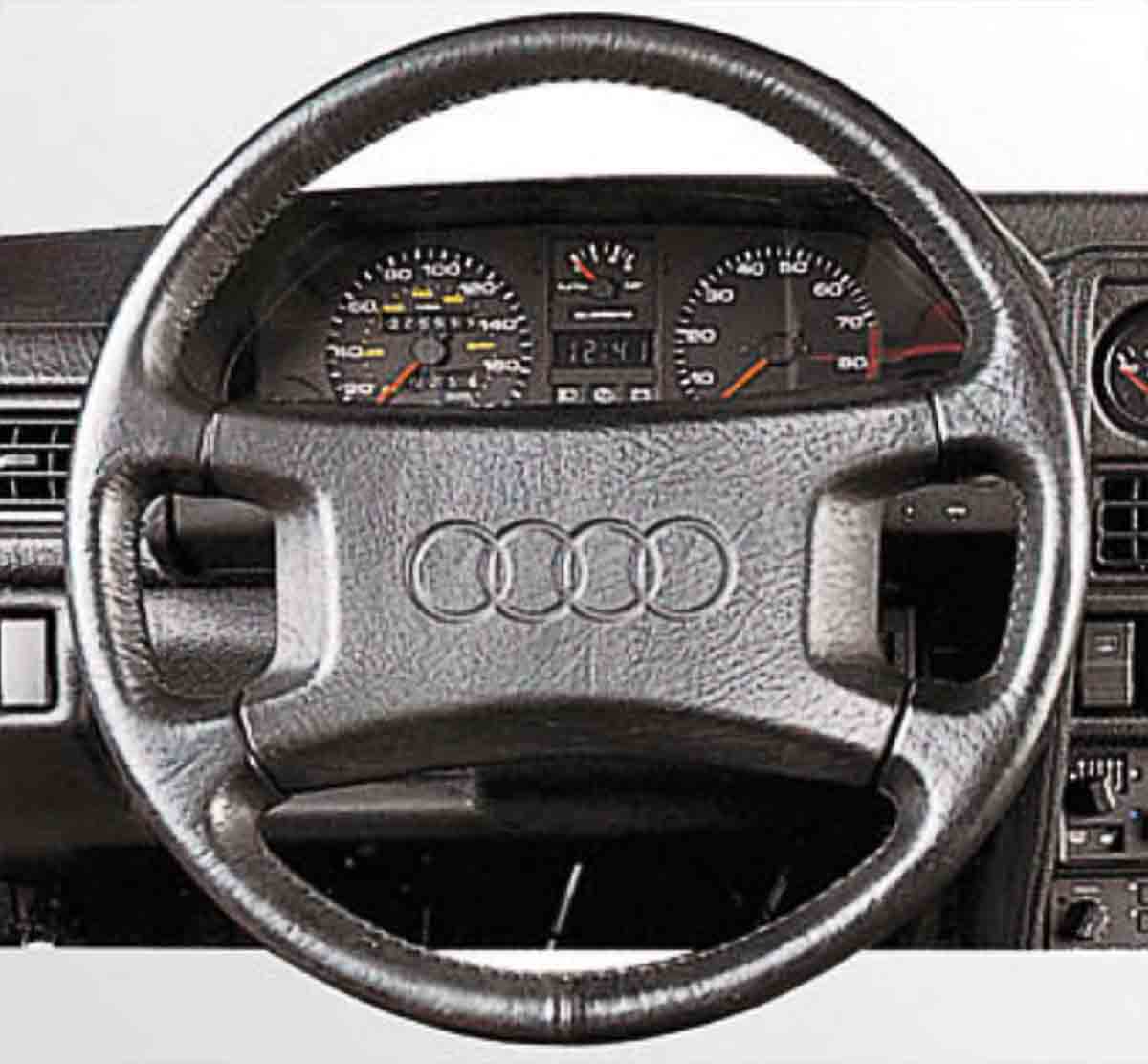
Performance 4x4s
Fast cars took a radical new direction in the 1980s. Led by Audi’s Quattro, a new generation of performance machines adopted four wheel-drive for the first time, delivering optimum traction and improved handling. The Quattro was soon winning in rallies, where loose-surface traction is vital, and other manufacturers quickly followed suit. Lancia developed a four-wheel-drive version of its Delta HF Turbo and refined it into the definitive Delta Integrale, Ford produced their all-drive Sapphire Cosworth, and there were rally competitors from Peugeot, Toyota, and more—plus a host of all-wheel-drive performance cars dedicated to road use.
Audi Quattro Sport, 1983

| Origin | Germany |
| Engine | 2,133 cc, straight-five |
| Top speed | 155 mph (250 km/h) |
The Quattro changed the way we think about four-wheel drive, and the Quattro Sport tailored it for rallying with a short wheelbase, 300bhp engine, and a body made of aluminum, fibreglass, and Kevlar. It had all of the charisma, and nearly all the performance, of a Ferrari GTO.

Short cut
The original Quattro was too big and heavy for rallying, so Audi cut more than 12 in (30 cm) from the wheelbase to make the Quattro Sport lighter and more agile. The reduction in length was most noticeable at the rear side window.

Lightweight power
Like the regular Quattro, the Sport had an in-line five-cylinder engine, but it was otherwise very different. The block was made of aluminum alloy, and the alloy head had four valves per cylinder. Road engines had just over 300 bhp—rally cars had 500 bhp.

Four rings
Audi’s four ring logo is a clue to the company’s heritage. The rings represent the four German manufacturers that were brought together in the Auto Union group in 1932—Audi, DKW, Horch, and Wanderer. The Audi name had disappeared in the 1930s but was resurrected in 1965.
Volkswagen Golf Rallye, 1989

| Origin | Germany/Belgium |
| Engine | 1,763 cc, straight-four |
| Top speed | 130 mph (209 km/h) |
Volkswagen also jumped on the all-drive rally-car bandwagon. This supercharged Golf used the company’s Syncro four-wheel-drive system, and its box arches and rectangular headlamps made it look guite different to a regular Golf Mk 2.
Renault Turbo 21, 1986

| Origin | France |
| Engine | 1,995 cc, straight-four |
| Top speed | 141 mph (228 km/h) |
Renault’s forgettable repmobile was turned into a dramatic sports car with the addition of a 2-liter turbo engine. Turbo Quadra models added four-wheel drive to tame the wheelspin on the original two-wheel-drive car. However, its questionable build-quality means there are very few survivors.
Peugeot 405, 1987

| Origin | France |
| Engine | 1,905 cc, straight-four |
| Top speed | 135 mph (217 km/h) |
Peugeot followed up the excellent 205GTI hot hatch with the two-wheel-drive 405Mi16 sports saloon and its rare 405Mi16x4 four-wheel-drive stablemate. The smooth, 16-valve engine produced 158 bhp, and the chassis offered a blend of grip, agility, and ride quality. Sadly, however, the 405 was not built to last.
Lancia Delta Integrale, 1987

| Origin | Italy |
| Engine | 1,995 cc, straight-four |
| Top speed | 134 mph (215 km/h) |
Giugiaro’s Delta was very modern for its time, and was European Car of the Year in 1980. The HF Turbo version added extra pace, then Lancia provided four-wheel drive and ultimately a 16-valve head to turn a stylish runabout into the multi-rally-winning Integrale.
It is a quote. The Classic Car Book – The Definitive Visual History 2016




